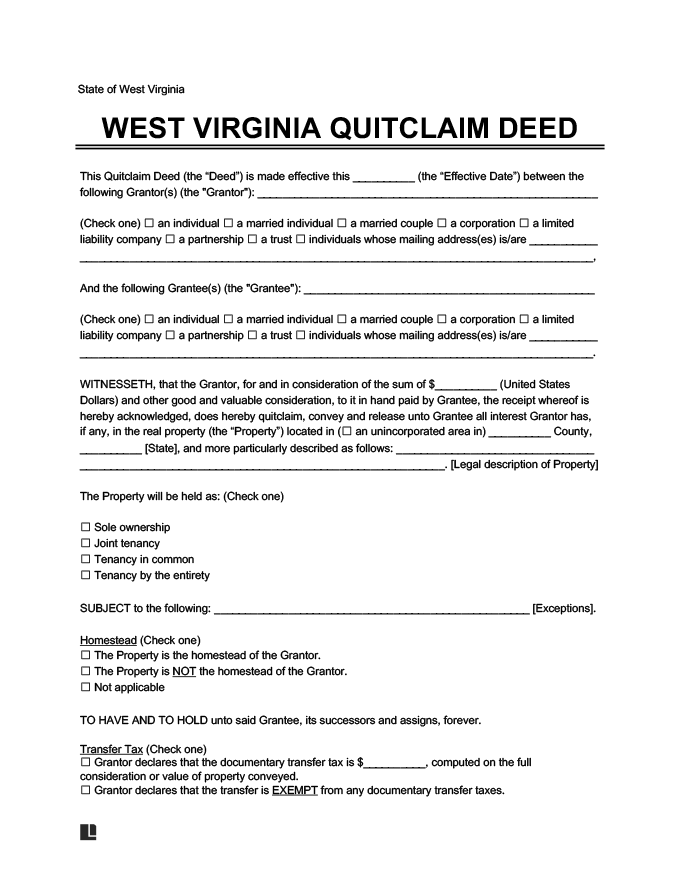When you file a quitclaim deed in West Virginia, precision is essential for executing a legally enforceable document. Read on to discover the steps involved in a property transfer without covenants.
Step 1: Reference the Original Deed
Reference the original deed to discover the legal description. If you can’t access the original deed, request a copy from the county clerk’s office where the property lies.
Step 2: List the Document Preparer
List the document preparer’s name so the county clerk’s office knows who drafted it. Also, provide the “Return to” information so the recorder knows to whom to give the recorded document.
Step 3: Fill out the Quitclaim Deed
Fill out the deed using our template, including details like the consideration, date of conveyance, legal description, and the grantee and grantor’s information.
If you don’t use a template, refer to W. Va. Code § 36-3-7 for what language to include in your document.
Step 4: Complete Additional Forms
If you have to pay the excise tax because your transfer involves consideration, complete a Declaration of Consideration or Value. Additionally, Form STC 12:39 must accompany every quitclaim deed in the state.
Step 5: Sign
Request that the grantor sign the deed before a notary public or two witnesses to abide by the requirements in W. Va. Code § 39-1-2.
Step 6: File
Bring your signed and acknowledged quitclaim deed and the documents from step four to the relevant county clerk’s office. Allow them to file the document, as it’s a requirement under W. Va. Code § 39-1-2. Prepare to pay the associated filing fees.
